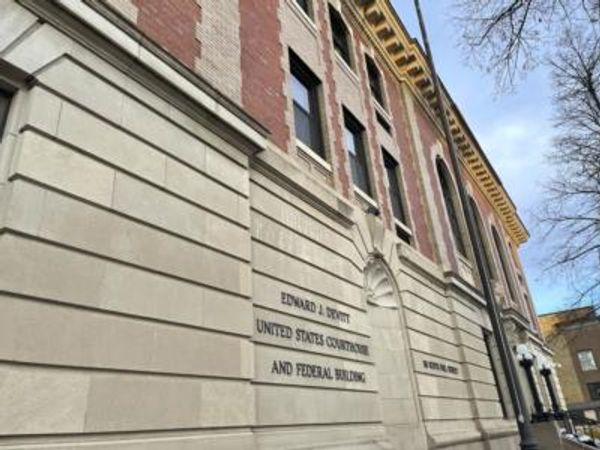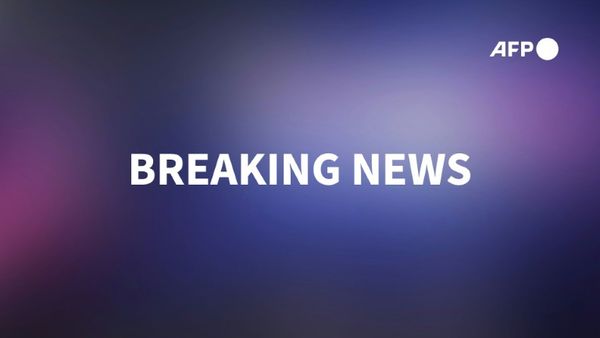
Stock-market believers are looking past the roughest stretch in months for US equities and clinging to bets on a rally in the back half of the year once the Federal Reserve stops hiking interest rates.
The S&P 500 Index is coming off its worst week since Dec. 9, as hotter-than-forecast inflation data boosted speculation that the Fed will lift borrowing costs several more times, potentially pausing in July. That’s a steeper path of policy tightening than investors were bracing for just a few weeks ago.
However, it still largely tracks with the theory that’s prevailed since the end of 2022: That equities would struggle through the first six months of the year before gaining strength in the second half. Stock-market technicals indicate that investors agree with this logic, as the S&P 500’s uptrend that started last fall continues even with the index losing 2.6% this month.
“We’re getting closer to the end of the Fed’s rate cycle and markets will begin to start discounting that,” said Mary Ann Bartels, chief investment strategist at Sanctuary Wealth.
Of course, risks to this outlook abound. Swaps traders see a peak rate of roughly 5.4% in July, up from around 5% at the start of February. But a new paper argues that it may need to rise as high as 6.5%, raising the specter of a so-called hard landing in which the economy falls into a recession. In the rosier soft-landing scenario, the Fed tames inflation while the economy continues to grow.
“The market can handle a terminal rate at 5.5%, but it wouldn’t be able to handle one that’s 6% or higher,” Bartels said “That would really rock markets.”
The alarming inflation figures weren’t the only trigger for the S&P 500’s down week. Dire forecasts from bellwethers like Walmart Inc. and Home Depot Inc. also soured the mood. This week brings more clues on the health of the consumer, with profit updates from Target Corp. and Lowe’s Cos.
The stock market slump may be discouraging, but it shouldn’t be a shock based on historical patterns. Over the past 25 years, February has been among the worst months for the S&P 500, averaging a loss of 0.4%, according to data compiled by Bloomberg. The benchmark gauge is down 2.6% this month after leaping 6.2% in January.
For Bartels, any pullback in the coming weeks and months will be an opportunity to buy. She favors aerospace and defense stocks, along with semiconductors, which have rebounded after a brutal 2022.
She isn’t alone. Ryan Detrick, chief market strategist at Carson Group, is sticking with his bet that the US economy will skirt an economic downturn. He thinks inflation will ebb further, and if rates stay higher for longer he recommends small-cap companies and large-cap industrials.
Fed prep
“The stage is still set for the US economy to accelerate in the second half of the year on a strong consumer,” he said. “That would be a boon for equities.”
The Fed’s next rates decision is still nearly a month away, leaving the market plenty of time to absorb a flood of inflation, labor market and wage-growth figures. Traders are preparing for the Fed to possibly return to jumbo hikes: Overnight index swaps are pricing in about 30 basis points of tightening for the March 22 announcement, and two-year Treasury yields touched the highest since 2007 on Friday.
That’s a toxic backdrop for growth stocks, whose valuations are more sensitive to changes in interest rates. Those shares saw strong rallies to start this year on speculation that the Fed would soon pause its hikes. With that seeming less likely, the tech-heavy Nasdaq 100 tumbled 1.7% Friday, eclipsing the decline in the S&P 500.
But even so, the bull case for stocks is still in place as long as the Fed remains on the path it set last year, according to Michael Antonelli, market strategist at Baird.
“Inflation is never going to fall in a straight line after peaking,” he said. It would require a full quarter of hotter-than-expected inflation and jobs data to force the Fed to dramatically raise its projections for its terminal rate, he estimated.
“The market doesn’t necessarily hate rate hikes,” he said. “It hates when hikes are bigger than it expects or faster than it expects.”







